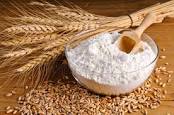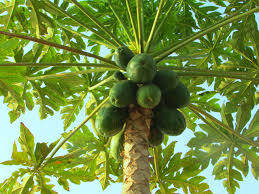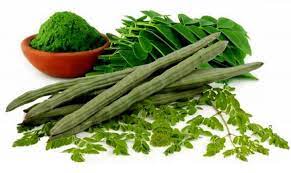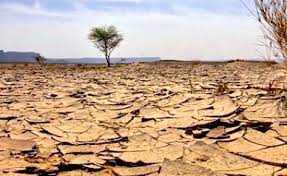
Wheat is a cereal grain, originally from the Levant region of the Near East but now cultivated worldwide. Wheat is a grass widely cultivated for its seed, a cereal grain which is a worldwide staple food.The many species of wheat together make up the genus Triticum; the most widely grown is common wheat (T. aestivum).
Wheat is grown on more land area than any other food crop (220.4 million hectares, 2014). World trade in wheat is greater than for all other crops combined. In 2016, world production of wheat was seven hundred and fifty-five million (755,000,000) metric tons, making it the second most-produced cereal after maize.
Since 1960, world production of wheat and other grain crops has tripled and is expected to grow further through the middle of the 21st century. Global demand for wheat is increasing due to the unique viscoelastic and adhesive properties of gluten proteins, which facilitate the production of processed foods, whose consumption is increasing as a result of the worldwide industrialization process and the westernization of the diet.
Wheat is an important source of carbohydrates.Globally, it is the leading source of vegetal protein in human food, having a protein content of about thirteen percent (13%), which is relatively high compared to other major cereals but relatively low in protein quality for supplying essential amino acids. When eaten as the whole grain, wheat is a source of multiple nutrients and dietary fiber.
The grain has major application in the food industry mainly bakery, followed by pasta, noodles, and other processed foods.More than two-thirds of global wheat is used for food, twenty percent (20%) is used for livestock feed and another three to five percent (3% to 5%) each for seed, industrial use and other uses.
China is the largest wheat producing country with the production capacity of one hundred and twenty-six million (126,000,000) metric tons while India is the second largest wheat producer with the production of around ninety-five million (95,000,000) tonnes. India and China together account for around twenty percent (20%) of the total wheat production across the globe.
Wheat flour is used as the main ingredient in several bakery and fast food products such as bread, noodles, pasta and breakfast cereals. Growth in the demand for these products has led to an escalation in the overall sales of wheat flour across the globe.
There are different varieties of wheat flour available which are distinguished based on the amount of gluten they contain. Gluten is the wheat's natural protein which is responsible to give structure to the baked goods. Wheat flours made from hard wheat contains high protein varieties and also have higher gluten content are called as strong flours.
While, the flour made from soft wheat have low protein content and also lower in gluten is called as weak flours. The wheat flour helps in lowering the cholesterol levels and also assists in regulating blood sugar levels. It also provides a number of health benefits ranging from controlling obesity to improving the body's metabolism.
Moreover, wheat flour is inexpensive as compared to the flour made from other grains on account of which it is easily available to consumers belonging to all socio-economic groups. Manufacturers have also introduced vitamin-A fortified wheat flour to cater to the nutritional needs of the population.
Apart from this, wheat flour is now also being used for producing bioplastics, adhesives, paper, shampoos and conditioners, and other products.
Currently, Nigeria produces about nine hundred thousand (900,000) tons wheat annually up from about two hundred thousand (200,000) tons supported by government policy and private sector initiative.
This low-level of production is due mainly to unfavorable local climatic conditions requiring expensive irrigation. Continued threats of “Boko Haram” terrorist activities in most states within the country’s wheat growing belt in the northern region has mostly been responsible for the dropping production.
Nigeria currently importa about four million, four hundred thousand (4,400,000) tons of wheat annually and demand is expected to increase as consumer demand for wheat based foods continues to climb in response to changing tastes.
The Nigerian flour milling industry has an installed milling capacity estimated at around thirty thousand (30,000) metric tons per day, with growing demand for wheat in excess of five million (5,000,000) metric tons per annum (and estimated to rise to ten million (10,000,000) metric tons per annum by 2030).
As local production remains insufficient to cover for demand, wheat is mostly sourced through imports.This has historically contributed to high production costs (80% of total).
This report examines the financial viability of establishing a wheat processing plant in Nigeria that would produce wheat flour and wheat middlings /wheat meal as bye-product through the dry milling process.
Wheat flour is a powder made from the grinding of wheat used for human consumption. More wheat flour is produced than any other flour. Wheat varieties are called clean white or brown if they have high gluten content and they are called soft or weak flour if gluten content is low.
Wheat bran, a by-product of the dry milling of common wheat (Triticum aestivum L.) into flour, is one of the major agro-industrial by-produc ts used in animal feeding. It consists of the outer layers (cuticle, pericarp and seedcoat) combined with small amounts of starchy endosperm of the wheat kernel.
Wheat middlings (also known as millfeed, wheat mill run, or wheat midds) are the product of the wheat milling process that is not flour.
They are a good source of protein, fiber, phosphorus, and other nutrients, they are used to produce foods like pasta, breakfast cereals, puddings, and couscous for humans, as well as fodder for livestock and pets.






















